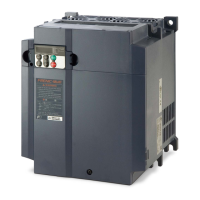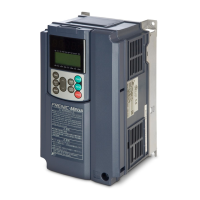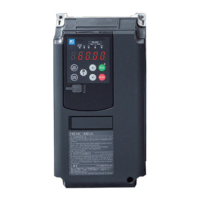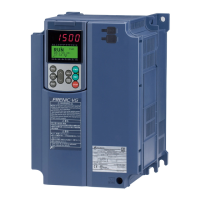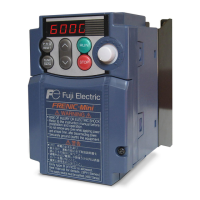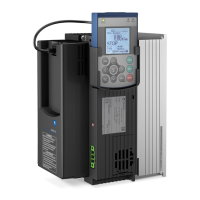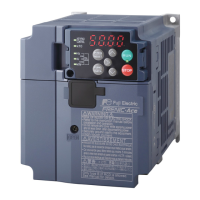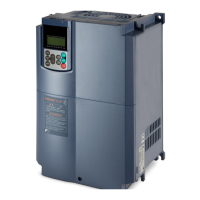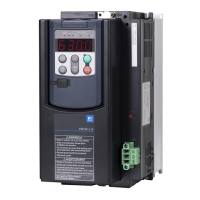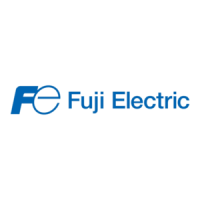2-1
Chapter 2 MOUNTING AND WIRING OF THE INVERTER
2.1 Operating Environment
Install the inverter in an environment that satisfies the requirements listed in Table 2.1.
Table 2.1 Environmental Requirements
Item Specifications
Site location Indoors
Ambient
temperature
-10qC(14qF) to +50qC(122qF) (Note 1)
Relative
humidity
5 to 95% (No condensation)
Atmosphere
The inverter must not be exposed to dust,
direct sunlight, corrosive gases, flammable
gas, oil mist, vapor or water drops.
(Note 2)
The atmosphere can contain only a low level
of salt.
(0.01 mg/cm
2
or less per year)
The inverter must not be subjected to sudden
changes in temperature that will cause
condensation to form.
Altitude 3300ft (1000 m) max. (Note 3)
Atmospheric
pressure
86 to 106 kPa
0.12inch(3 mm)
(Max. amplitude)
2 to less than 9 Hz
9.8 m/s
2
9 to less than 20 Hz
2 m/s
2
20 to less than 55 Hz
Vibration
1 m/s
2
55 to less than 200 Hz
2.2 Installing the Inverter
(1) Mounting base
The temperature of the heat sink will rise up to approx.
90°C(194qF) during operation of the inverter, so the
inverter should be mounted on a base made of material
that can withstand temperatures of this level.
Install the inverter on a base constructed from metal or
other non-flammable material.
A fire may result with other material.
(2) Clearances
Ensure that the minimum clearances indicated in Figure
2.1 are maintained at all times. When installing the inverte
will tend to increase. Do not install the inverter in a small
panel with poor ventilation.
Table 2.2
Output Current Derating Factor
in Relation to Altitude
Altitude
Output current
derating factor
3300ft (1000m) or
lower
1.00
3300ft (1000) to
4900ft (1500m)
0.97
4900ft (1500) to
6600ft (2000m)
0.95
6600ft (2000) to
8200ft (2500m)
0.91
8200ft (2500) to
9800ft (3000m)
0.88
Figure 2.1 Mounting Direction and
Required Clearances
(Note 1) When inverters are mounted
side-by-side without any gap between them
(less than 7.5HP), the ambient temperature
should be within the range from –10qC(14qF)
to +40qC(104qF).
(Note 2) Do not install the inverter in an
environment where it may be exposed to
cotton waste or moist dust or dirt which will
clog the heat sink in the inverter. If the
inverter is to be used in such an environment,
install it in the panel of your system or othe

